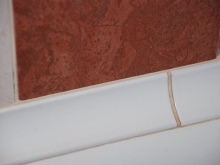Ceramic Bathroom Kers and Corners
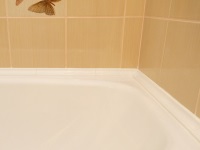
Why do we need them?
The gap formed between the edge of the font and the wall of the bathroom - one of the most frequent problems that people encounter in the process of repairing the bathroom. Over several decades, there have been many ways to eliminate this trouble - from the major sealing of the gap with a border of tile to sealing the gap with sticky curb tape, which is more of a temporary solution.
Those who are engaged in repair and finishing of the bathroom independently, usually prefer a simpler and more reliable way, namely, the use of special corners for the bath. They come in two types - plastic and ceramic. If plastic corners have mainly a practical function - to prevent water from getting behind the tub, the ceramic skirting serves also decorative purposes. Ceramic edging creates a beautiful transition from the tile to the bathtub, giving the construction a finished look.

Advantages
- Ceramic skirting for the bath looks much more aesthetically pleasing than its plastic counterpart. The variety of colors allows you to choose a shade close to the tile, which will make the transition almost invisible.
- Ceramics - a natural material, so it is chosen by connoisseurs of all things natural in the interior.
- Ceramics are very well tolerant of high humidity, which is inevitable in the bathroom. On it rarely do not appear fungus and mold. Temperature changes are also not afraid of her.
- Ceramic corner does not need special care. Clean it with the same detergents that you use for tile.
- The service life of the ceramic corner for the bath is much longer than that of a similar product made of plastic.
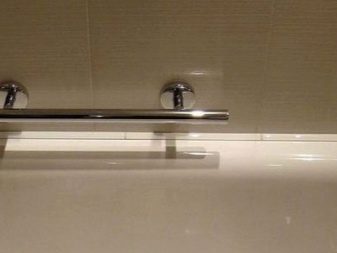
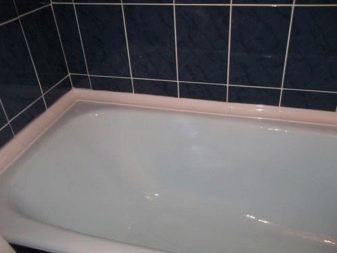
Cons
- Despite the fact that ceramic is a hard material and it is difficult to scratch it inadvertently during use, a strong enough blow can damage the curb.
- Ceramic corners are completely unplastic, so they cannot be used to seal indirect gaps (for example, if the bathtub is irregularly shaped).
- Ceramic bath plinth is a more expensive option than plastic corner. However, the price is justified, because such a product serves significantly longer.
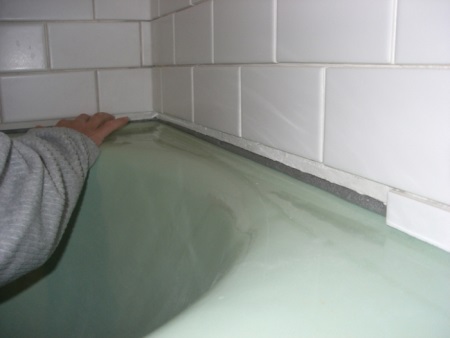
Types and sizes
Coming to a construction store, you will find three types of ceramic corners for the bath.
- "Pencil". This option is suitable for caulking the thinnest gaps. It has a cylindrical shape, sometimes with several faces. The color performance can be different, including with the effect of "metallic". The length is 20 cm and the width is 15 mm. It is also used as a border for walls and floor, dividing the room into zones.
- "Corner" - the most popular type of skirting; when they talk about the corner for the bath, usually mean it. It has a triangular cross-section, which allows you to insert one part directly into the gap, and the other two to be installed on the edge of the bathtub and on the wall. Ceramic corners can be white or colored, monochrome or with a pattern. Standard size - 20x5.5 cm and 25x5.5 cm.
- "Frieze" - a wide decorative border, which is most often used to finish the walls of the bathroom. However, some install it as a corner for the bathtub. It should be noted that the work with this element requires some construction skills, since it is laid on the same principle as tile. The dimensions of this type of curb can be different.
Together with the ceramic corner, do not forget to buy additional elements - plugs for the edges and stars for joints on the corners. These details are usually sold as a set, but you can buy them separately - it is easy to find the appropriate color and size.
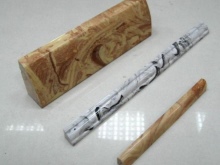
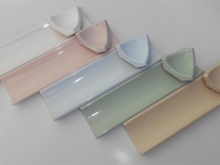
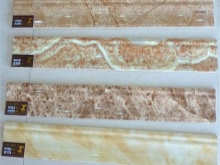
The ceramic corner is installed on the bathtub in two different ways.
How to install it on the tiles?
The first method is usually considered the easiest, so it is usually used by beginners in the construction business. In this case, the curb is glued directly to the tile.
- Clean the edges of the bath and adjacent parts of the wall from dirt, degrease and dry.
- Treat the seam with a sealant and let it dry.
- If necessary, cut the ceramic curb into pieces of desired size. In this case, you need to cut from the back side, and the chips on the ceramic should be grinded with a grinder or sandpaper.
- Experts recommend using liquid nails for ceramic corners. Apply adhesive compound to the back of the curb, apply it to the gap and press down firmly for a few seconds.
- When finished, treat the joints with a clear silicone-based bathroom sealant.
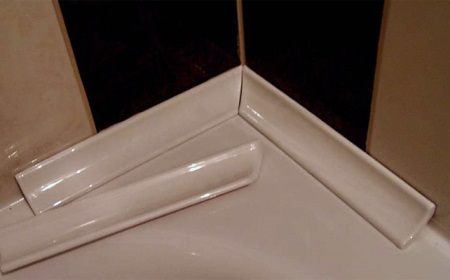
Installation under tile
Professionals prefer to lay a ceramic bathtub curb even before the tile. This method is considered more labor-intensive, it takes more time and construction materials. However, the result is worth it - the curb turns out very beautiful and durable.
- First you need to prepare the walls for ceramic tile: clean from old finishing materials, level with plaster or gypsum board, primed.
- Then you need to install the tub. Use a level for this, but do not forget to provide the slope necessary for normal water drainage.
- Now you can fill the gap with a sealant. It is best to use a silicone-based sealant. Before you get to work, seal the gap on both sides with masking tape - so you protect the bath enamel and ceramic tile from the sealant and glue.
- While the sealant is still dry, quickly smooth it out with a rubber trowel or soap-soaked finger (don't worry, the compound cleans up well from the skin).
- Prepare the tile adhesive according to the instructions.
- Apply the necessary amount of glue to the back of the corner and press it to the gap.
- Between the elements of the curb insert plastic crosses - the same ones you will use when laying tiles.
- Once the gap is sealed, you can proceed to tiling the walls. When the work is complete, you should grout the joints between the tiles and the elements of the curb. Use a grout of the same color for this purpose.
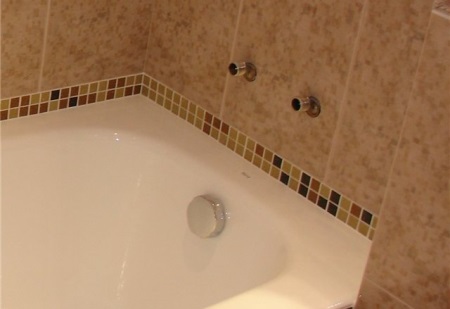
Service life
The service life of the ceramic corner for the bath is the same as that of other ceramic products used to cover the walls in the bathroom. According to experts, high-quality tile, laid in accordance with all the rules, with proper care, "lives" from 30 to 50 years. Of course, over such a period of time your bathroom will change many times, because many people prefer to do major repairs at least once every 10-15 years. Therefore, you can not worry about the fact that the ceramic corner will fall into disrepair before you want to change the interior of the bathroom.


